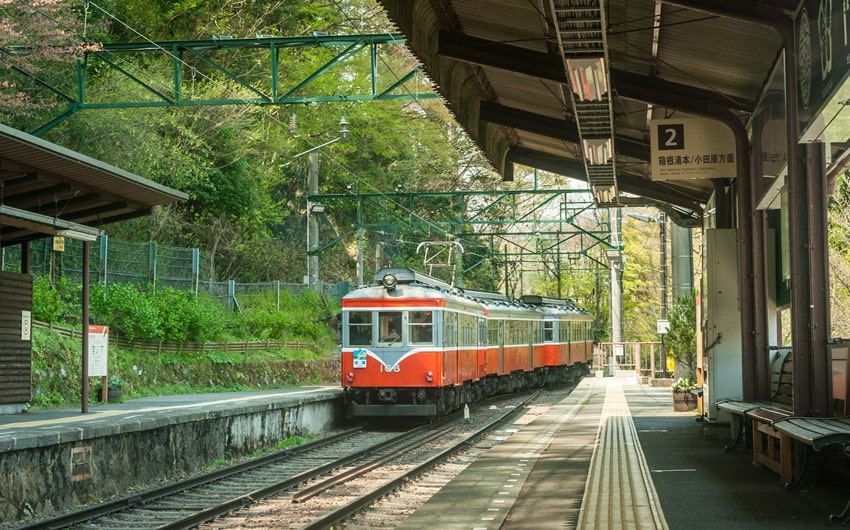Japan’s train system is one of the most efficient and extensive in the world, but navigating it requires an understanding of local etiquette. Whether you’re using the Japan Rail Pass to explore the country or simply commuting within a city, adhering to proper train manners is essential to ensure a smooth and respectful journey.
Keep Noise to a Minimum
One of the most noticeable aspects of train travel in Japan is the emphasis on quietness. Conversations should be kept low, and phone calls are generally discouraged. If you need to take a call, it’s polite to move to the space between carriages, where you won’t disturb other passengers. Many people use trains as an opportunity to rest, read, or simply enjoy some quiet time, so maintaining a peaceful environment is crucial.
In addition, you’ll notice that mobile phones are often set to silent mode (known as “manner mode” in Japan). Even when messaging or browsing, keep your phone use discreet to respect the tranquility of the carriage.
Respect Personal Space
During rush hours, trains can get extremely crowded, especially in major cities like Tokyo and Osaka. Despite the lack of space, it’s important to avoid pushing or shoving. The Japanese are known for their patience and orderliness, and this extends to how they navigate crowded trains. When entering or exiting a train, wait patiently for others to move rather than forcing your way through.
If the train isn’t too crowded, avoid sitting directly next to someone unless there are no other seats available. Personal space is highly valued, and spreading out when there’s room is seen as respectful.
Seating Etiquette
Priority seats, often marked with distinctive colors, are reserved for the elderly, pregnant women, people with disabilities, and those with young children. Even if these seats are empty, it’s best to avoid using them unless you belong to one of these groups. In crowded trains, consider standing to leave regular seats for those who may need them more.
When sitting, avoid spreading your belongings across multiple seats. Bags should be placed on your lap or in the overhead racks to free up space for other passengers.
Handling Luggage
Travelers using the Japan Rail Pass often have larger suitcases or backpacks. While Japan’s trains are designed with convenience in mind, large luggage can be cumbersome during busy times. If you’re carrying a backpack, it’s courteous to either place it on the overhead rack or hold it in front of you to avoid hitting others in the packed space. Larger suitcases should be stored in designated luggage areas, typically located at the end of each carriage.
For those traveling on long-distance trains like the Shinkansen, consider using the luggage shipping services available at most major stations. This service allows you to send your luggage directly to your hotel, reducing the burden of carrying it through crowded trains.
Eating and Drinking on Trains
Eating and drinking on trains is generally acceptable on long-distance services, such as the Shinkansen, where ekiben (station bento boxes) are popular. However, on local or commuter trains, eating is discouraged, especially during peak times when the trains are crowded. If you need to eat or drink, do so discreetly and clean up after yourself, ensuring you don’t leave any litter behind.
Be Mindful of Others
Courtesy is a cornerstone of Japanese culture, and this is reflected in train etiquette. Offering your seat to someone in need, keeping your belongings tidy, and maintaining a quiet atmosphere are all part of being a respectful passenger. When listening to music or watching videos, always use headphones, and ensure the volume is low enough that it doesn’t disturb others.
Another important aspect of train etiquette is respecting the queue when boarding. Japanese commuters typically line up in an orderly fashion at marked spots on the platform. It’s considered rude to cut in line or push ahead when the train arrives. Wait for passengers to disembark before stepping onto the train, and follow the flow of boarding passengers.
Utilizing the Japan Rail Pass
The Japan Rail Pass is a fantastic option for travelers exploring the country, offering unlimited travel on JR trains, including the Shinkansen. When using the pass, it’s important to remember that it doesn’t exempt you from following the rules of train etiquette. In fact, as a visitor, adhering to these practices will enhance your travel experience and ensure you blend seamlessly with local passengers.
Make sure to reserve your seat on long-distance trains, especially during peak travel seasons. Reserved seats guarantee you a spot and often come with extra space for luggage. Additionally, familiarize yourself with the train schedules and routes ahead of time to avoid any confusion or delays during your journey.
Conclusion
Respecting train etiquette in Japan is not only about following the rules but also about embracing a culture that values harmony, respect, and consideration for others. Whether you’re a first-time visitor or a seasoned traveler using the Japan Rail Pass to explore the country, understanding and practicing these etiquette guidelines will make your journey smoother and more enjoyable.
By doing so, you contribute to the overall experience of train travel in Japan, where orderliness and respect create a peaceful environment for everyone.







